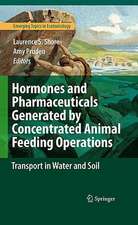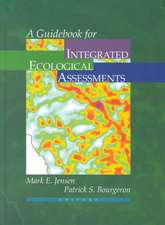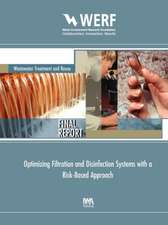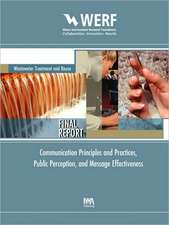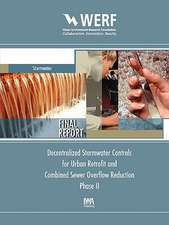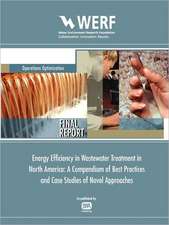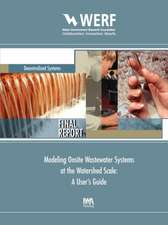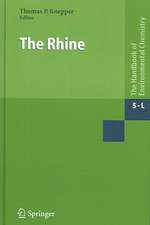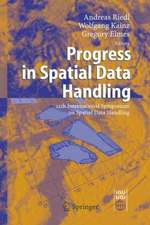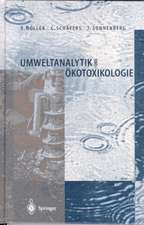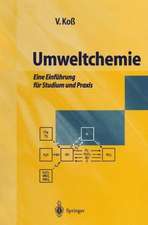Waves and Tidal Flat Ecosystems
Autor Eiichi Baba, Hideo Kawarada, Wataru Nishijima, Mitsumasa Okada, Hiroshi Suitoen Limba Engleză Paperback – 14 oct 2012
Preț: 381.21 lei
Nou
Puncte Express: 572
Preț estimativ în valută:
72.96€ • 75.89$ • 61.14£
72.96€ • 75.89$ • 61.14£
Carte tipărită la comandă
Livrare economică 13-27 martie
Preluare comenzi: 021 569.72.76
Specificații
ISBN-13: 9783642624445
ISBN-10: 3642624448
Pagini: 176
Ilustrații: X, 165 p.
Dimensiuni: 155 x 235 x 9 mm
Greutate: 0.25 kg
Ediția:Softcover reprint of the original 1st ed. 2003
Editura: Springer Berlin, Heidelberg
Colecția Springer
Locul publicării:Berlin, Heidelberg, Germany
ISBN-10: 3642624448
Pagini: 176
Ilustrații: X, 165 p.
Dimensiuni: 155 x 235 x 9 mm
Greutate: 0.25 kg
Ediția:Softcover reprint of the original 1st ed. 2003
Editura: Springer Berlin, Heidelberg
Colecția Springer
Locul publicării:Berlin, Heidelberg, Germany
Public țintă
ResearchCuprins
1 What is a tidal flat?.- 1.1 Introduction.- 1.2 Function and structure of natural and man-made tidal flats.- 1.3 Key factors to determine a tidal flat characteristic.- 1.4 Fluid flow on a tidal flat.- 2 Effects of waves and tide on tidal flat ecosystems.- 2.1 Introduction.- 2.2 Method of experiments on internal flow in seabed.- 2.3 Role of wave and tide on seawater infiltration in sandy beach.- 2.4 Role of wave and tide on ecosystems in tidal flats.- 2.5 Concluding remarks.- 3 Unified model for wave breaking action.- 3.1 Introduction.- 3.2 Mathematical model.- 3.3 Unified model for two-phase flow with surface blocking effect.- 3.4 Numerical results.- 4 Oil pollution: human damages on hydraulic regime in sandy beach ecosystems.- 4.1 Introduction.- 4.2 Infiltration of stranded oils into sandy beach sediments by waves and tides.- 4.3 Effects of the penetrated oils into sandy beach sediments on seawater infiltration by waves.- 5 Theoretical study of oil pollution.- 5.1 Introduction.- 5.2 Behavior of spilled oil in the surfzone.- 5.3 Mathematical model.- 5.4 Unified model for three-phase flow with adhesion.- 5.5 Numerical results.- 6 Oil pollution: human damage on hydraulic regime and benthic communities in tidal flat ecosystems.- 6.1 Introduction.- 6.2 Penetration of stranded oils into tidal flat sediments by tides.- 6.3 Effects of the penetrated oils into tidal flat sediments on seawater infiltration by tides.- 6.4 Effects of oil spill on seawater infiltration and macrobenthic community in tidal flats.- 7 Decomposition mechanism of spilled oil by bacteria.- 7.1 Introduction.- 7.2 Notations.- 7.3 Characteristics of oil decomposition into water.- 7.4 Incompressibility condition for a total flow system.- 7.5 Biological contribution to satisfy reactivity condition.- 7.6 Unified model for three-phase flow with decomposition.- 7.7 Numerical results.- 8 Breaking waves and ecosystem dynamics.- 8.1 Introduction.- 8.2 Mathematical modeling.- 8.3 Coupling scheme between waves and ecosystem dynamics.- 8.4 Numerieal results.- 9 Methodologies for theoretical studies.- 9.1 Introduction.- 9.2 Mathematical methodologies.- 9.3 Numerical methodologies.
Caracteristici
The book provides a state-of-the-art methodology to explore natural phenomena. Interdisciplinary approach. Includes supplementary material: sn.pub/extras

